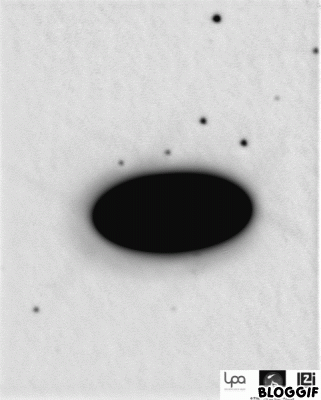ePARADISE
Exoplanetology and Planetology with infrARed Adaptive high Dynamic Imaging SystEm
PI: François COLAS (IMCCE, Observatoire de Paris, CNRS)
Co-Is at IMCCE: Kévin BAILLIÉ (IMCCE, Observatoire de Paris, CNES), Valéry LAINEY (IMCCE, Observatoire de Paris, JPL)
Others co-Is:
- LESIA: Pierre BAUDOZ, Pierre DROSSART, Elsa HUBY, Raphaël GALICHER
- ENS-LPA: David DARSON, Yannick CHASSAGNEUX, Juliette MANGENEY
- Université de Bourgogne: Julien DUBOIS, Johel MITERAN
Goals of the project
The understanding of the Solar System architecture and origin is not only based on the study of the planets of our planetary system, but also on the study of planets around other stars, that can be observed at different stages of the planetary evolution. Imaging of Saturn and Venus, as well as the direct imaging of exoplanets are the two science cases driving our project. Both require a high dynamic range imaging system.
The inner satellites of giant planets
The proximity of the inner satellites from giant planets make them difficult targets for ground-based observations, resulting in a lack of precision in their respective dynamical models compared for example to the Galilean moons. However the proximity of the planet makes their orbit very sensitive to giant planets gravity giving interesting physical properties like tidal effects witch give interesting information on Jupiter interior. The problem is that these observation are difficult from ground base observations (Colas 1991, Saquet et al. 2016), even quite impossible for the closest one. The main observational problem is the background light coming the planet introducing photon noise making disappear faint satellites. To highlight tidal effects requires measurements over long periods of time witch is incompatible with spacecraft short life time and even with typical large telescope schedules. In this context the use of a dedicated telescope even “small” is primordial. The one meter telescope at Pic du Midi observatory is perfectly suited for this purpose as it benefits of a well known excellent seeing (https://www.europlanet-society.org/pic-net-ground-based-images-press-release/) and as it is driven by Paris observatory teams (IMCCE and LESIA).
Venus atmosphere
Venus atmosphere is better known since Venus Express spacecaft mission, but an follow up is still needed. It has been shown that there are several windows in the infrared spectrum allowing the observation of Venus ground (direct black body emission, Lecacheux et al., 1993) and of different cloud layers. The multi spectral version the the ePARADISE will be efficient for these purpose.
Direct imaging of exoplanets
In the last twenty years, the study of exoplanets has become a very active field in modern astronomy with several techniques of detection being used routinely. New types of planets have been revealed like hot Jupiter, hot Neptune, super-Earth, or mini-Neptune; together with an unexpected diversity of planet properties. However, the most used techniques for exoplanet detection (radial velocity and transits) are strongly biased towards planets which orbit very close to ‘quiet’ stars, i.e. less than 5 times the distance between the Earth and the Sun. Not only these techniques are indirect methods (no direct detection of the planet light except for a few transiting planets) but they probe a late stage of planet evolution after the migration phases towards the star. To address the question of planet formation and early stage evolution, observations of long-orbital-period exoplanets located at more than a few AU from their star are needed. Direct imaging, particularly in the SWIR (Short Wave Infra Red) wavelength range, has the ability to approach this regime of separations but it is very challenging as it requires very high performance in contrast and spatial resolution in order to distinguish the low signal from the planet overwhelmed by the glaring starlight. As a consequence, since exoplanets are 104 to 1010 times fainter than their star, the use of adaptive optics (AO) system and coronagraphy is crucial. While AO systems correct for the effect of atmospheric turbulence, coronagraphy optically rejects the light of the central star, which prevents saturation of the detector and reduces the photon noise. However, their performance is affected by optical aberrations of various natures (phase, amplitude, atmosphere turbulence, optical defects…). Ground-based coronagraphic instruments are mainly limited by two kinds of aberration residuals: fast residuals that the AO cannot correct but will average over time and slow residuals resulting from mis-calibrated aberrations that are not sensed by the AO. These residuals create stellar speckles that are bright enough to prevent direct exoplanet imaging. This residual starlight could be calibrated and subtracted out in post-processing on condition that the image is stable in time. This is however not the case due to mechanical and temperature drifts that evolve with time. The induced aberrations, in particular tip-tilt, and other low order aberrations, thus degrade the performance of the coronagraph as well as the signal to noise ratio (SNR) of potential planets. For these reasons, techniques to sense these aberrations based on the analysis of the coronagraphic image have been implemented. However, the control loop is constrained by the science image acquisition rate, which is generally low, in order to maximize the SNR of the faint planet signal.
The optimal technique for direct imaging of exoplanets or faint objects near planets in our own Solar system would thus require, besides of very high dynamic, the simultaneous capability of long exposure times to maximize the SNR of weak objects, as well as a fast reading mode of the bright stellar/planets residuals to actively correct for the aberrations affecting the image. Nowadays, it does not exist any imaging system with all of these three main features: dynamic, long exposure, real time response, using just one optical path and detection.
Based on the experience of IMCCE and LESIA in the means of detection in planetology and exoplanetology and the scientific cameras developed by LPA and Le2i, we propose to study, design and test an innovative imaging system in response of all scientific detection issues previously presented.

Last update Friday 19 June 2020